Trends and Trendmakers
May 2, 2012
Text by Kyle Hoepner
RESIDENTIAL ARCHITECTURE
The nature of the product—buildings often take years to make, then stay around for decades or centuries of use—dictates that trends in architecture don’t flow with the same speed as trends on the fashion runway. Still, notions of style and preferred ways of living do evolve over time, and wise architects learn to anticipate these changes. What are the trending topics for New England’s residential architects today?
Energy Efficiency
Jeremiah Eck, of Boston’s Eck | MacNeely Architects, holds that saving energy, although hardly a sexy design theme, will continue to gain in importance. Despite the proliferation of codes and rating systems such as HERS, LEED and Energy Star, Eck says, “so far, most builders and even some architects only pay lip service to this goal.” The future will require more than just attention to standards. A greater emphasis on age-old techniques like good siting and designing buildings suited to a region’s climate is important as well.
Portland, Maine, architect Richard Renner concurs. “When clients are interested,” he says, “it’s possible to make huge gains in efficiency and quality.” He, too, stresses the need for more than just efficient insulation and energy-saving appliances (valuable as these are). “This means re-thinking the modernist desire for lots of glass everywhere. Instead, we try to deploy windows more carefully to balance view, light, ventilation, heat gain and heat loss.”
Rethinking the Plan
Eck observes that “all of us lead markedly different lives than we did just a few decades ago. Married couples make up only 48 percent of households and many of us are living alone, yet we continue to treat house plans the same way, with the same rooms: living rooms, dining rooms, bedrooms and baths.”
He suggests that a rethinking of plans is imminent, combining spaces in ways that have more to do with how we actually live. “Do we really need a formal living room or a formal entry anymore? Should all bedrooms be seen as multiple-use spaces?”
Asking these questions may pave the way to a smaller, more efficient plan that is more in tune with our day-to-day needs. One such change is already common: what Eck calls the “Living Hall,” a single space for relaxing, cooking and dining that has increasingly found a place at the heart of many home plans.
For Renner, this central “social interaction” space makes it equally important to supply a few private “away” spaces as a counterpoint. “These could be semi-private alcoves off the living-dining-kitchen space, a sitting area in a bedroom, or even a stair landing large enough for a window seat or a reading chair,” he says.
With more and more families migrating to smaller quarters in the city, it’s not just a question of interiors. The more crowded confines of urban areas offer the challenge of finding ways to provide access to the outdoors. “We always look for opportunities to use the roof,” Renner says, “And inside, with less space to work with, we try to create openness and long views without compromising privacy.”
Universal Design and Aging in Place
“The concept of ‘aging in place’ has been around for some time,” says architect Josh Safdie of Boston’s Institute for Human Centered Design, “but it has only begun to attract major attention in the last several years.”
He ties this growing popularity to the aging of the Baby Boomer generation. A key concept, for Safdie, is Universal Design: creating spaces tailored to today while keeping in mind the inevitable changes in mobility and lifestyle that will occur over time. Richard Renner, for example, notes that in most houses and apartments, “elevators are still the exception. So we almost always design for future single-floor living.”
The goal is a residential experience that evolves along with changes in abilities and life patterns. “We will need homes where grandparents and grandchildren can coexist, where the benefits of multi-generational living can be fully enjoyed,” says Safdie.
None of these trends is related to any specific aesthetic, modernist or historical. Yet all can make important contributions to what Jeremiah Eck foresees as “a new American house that is equivalent to the iPad or the Hybrid car, combining the best available technology with the most inspiring and useful design.”
INTERIOR DESIGN
Text: Stacy Kunstel
Interior design and designers are as fickle as film critics, easily lauding something on its way in and quickly eschewing it as it’s on its way out. Still, we found a few trends that have staying power.
Home Away from Home
The look of your next favorite hotel will likely be created by an interior designer with more residential cred than commercial experience. As hoteliers look to make their lobbies and rooms more personal and plush using fabrics, finishes and furnishings designed for residential use, they’re also hiring designers who specialize in turning house into home. “We want the same layered look in the inn that we strive for with our residential work,” says Providence-based interior designer Nancy Taylor of her first hotel project, the Weekapaug Inn in Watch Hill, Rhode Island. “In residential work a designer is always aware that the client will be living with their furnishings for many years,” she says. “In hospitality the guest wants to experience something unique, apart from the everyday. The challenge is to provide that experience and do it tastefully.”
Boston-based interior designer Rachel Reider wraps up her third and fourth hotel projects for Lark Hotels, in Newport and Nantucket, this summer. “While we love residential design, hospitality allows us more freedom to push the design envelope a bit,” she explains. “Guests are more open to and often appreciate a bolder aesthetic than they might have in their own home because it is part of the novelty of the travel experience.”
The Personal Touch
Homeowners want that one-of-a-kind look and they like the sense of discovery that comes from finding a piece that’s not only perfect, but is made locally and has a story behind it. “I believe the ability to source unique pieces is one of the strongest assets an interior designer brings to a project,” says Reider. “Clients want to feel their home is a representation of them, and the more personal touches we can incorporate into the interiors the better.”
Natalie Carpenter, who owns Lekker in Boston’s South End, would agree. She works with a Belgium-based furniture company, called Marie’s Corner, that manufactures its customized pieces in the United States. “It gives the consumer the design choice, better service and higher quality they are looking for with the comfort of knowing it’s made right here in the U.S.A.,” Carpenter says.
Eclecticism
Complete period houses have gone the way of period styles. It’s not happening. Period. Today’s clients are more likely than ever to blend eras, trends and looks. “My favorite trend is that there is so much to choose from that almost every style has a place,” says Portland, Maine–based interior designer and store owner Linda Banks. “You can express yourself with crusty barn board and rustic reclaimed factory furniture or reinvent your style as high-gloss white furniture with a twist of Asian, flanked by a batik sofa and orange gourd lamps.”
Mixing styles helps avoid a contrived feeling, notes Phillip Jude Miller of America Dural, a Cambridge, Massachusetts, firm. “It’s important to be conscious of context in order to keep balance,” he says. “For example, a Victorian house makes a very strong statement. So I would shy away from Victorian furnishings to avoid the feeling of a museum. Furnishings are best when paired with a complement. This is especially true when dealing with a midcentury house. I think people tend to want to fill it with midcentury furniture. One needs counterbalance to make a twenty-first-century statement rather than recreate a stage set from Mad Men.”
WALLS, FLOORS AND FINISHES
Text: Paula M. Bodah
Smooth surfaces and a sea of pale neutrals will always have their place in beautiful homes, but the look and feel that designers and their clients want today is moving into deeper, richer, glossier and more tactile territory.
Texture
“People are looking for more than flat wall coverings or a painted wall,” says Peter Webster, vice president of Webster & Company in the Boston Design Center. Phillip Jeffries grasscloths in a rainbow of colors are hugely popular, Webster says, including a new collection called Rivets, a raffia covering sprinkled with raised resin dots.
Sally Wilson, of Salem, Massachusetts–based Wilson Kelsey Design, confirms the penchant for texture. She recently outfitted a powder room in black crocodile-embossed recycled leather from Eco Domo. “Leather is a nice, material that people can relate to,” she says. And what’s not to love about using recycled material?
Boston designer Eric Roseff has found a whole new world of texture in Venetian plaster since he discovered the work of Pietra Viva, a Boston and Milan, Italy–based company. “They do Venetian plaster like you’ve never seen it. They take it to a whole new level,” Roseff says. A prime example of their work is the glossy, crocodile-look surface they gave to a foyer in a house Roseff designed. Hides are gaining in popularity, too, for both both walls and floors, according to Roseff. He gave a master bedroom handsome distinction by covering one wall in Kyle Bunting’s hide strips of various widths, colors and textures.
In general, Wilson says, wallpaper is enjoying a renaissance. One of her favorite new wallpapering techniques is the photographic mural. “Digital photography is moving us to do things we couldn’t do twenty years ago,” she says. Mark Christofi, of Reading, Massachusetts, gave a room stunning impact when he covered a wall with a huge photo of fireworks.
Texture is welcome underfoot, too. “I’m seeing a lot in terms of leather floors,” Wilson notes. And Webster says, when it comes to carpet, felt is big. “Holland and Sherry has a new line of felt carpets that we’re really excited about,” he says. “They’re customized for color and size, and the sky’s the limit.”
And there’s no need to limit one’s toes to a single texture. “I’m seeing a lot of layering,” Roseff says, “things like a large seagrass rug topped with a beautiful Tibetan.”
Reflective Surfaces
People are loving a bit of bling these days—a bit of gloss to add spark to their interiors. The highly polished Venetian plaster Roseff talks about, or the hint of shine in the Rivets wallcovering from Phillip Jeffries are two examples. “Reflective surfaces are a great way to play with light,” Roseff says. “It’s about adding depth.” His recent projects have included a floor made up of polished white glass tiles. “I’m also using a lot of lacquered furniture lately,” he adds.
Color
Pastels and neutrals will never vanish, but all the pros agree that color is back in a big way.
“We’re seeing a surge in teals, oranges and violets,” Webster says. Courtney Fadness, a designer with Mark Hutker Architects in Falmouth, Massachusetts, is using all those colors at once. “I’m working on a project on Martha’s Vineyard, and I just presented a color palette to the client that uses turquoise, blue, orange and lavender,” she says. Fadness sees this new focus on color as a sign of hope and joy. “I think people react to what goes on in the world politically, economically and socially,” she says. “We’re coming out of the recession, getting out of the doldrums. There’s new hope, and I think people are showing that by craving vibrancy and energy and joy in their surroundings again.”
FURNITURE, FIXTURES AND ACCESSORIES
Text: Debbie Hagan
While designers can’t point to a single trend driving furniture and home accessories today, they spot a number of small changes that bring buyers back for a closer look.
Lucite
Take the use of Lucite—an eighty-year-old product. Combine it with leather, velvet and even heavier materials, and it turns into something fresh and contemporary. According to Ken Dietz, designer and owner of online retailer Market 27, great examples include Grace & Blake’s X Bench and X Stool with their upholstered seats and Lucite cross legs. As well, the company creates a sweet Bella Bench and Bella Cube, both made entirely of clear, smooth Lucite, but juxtaposed with rough-textured rope handles.
“Lucite is a great way to break up finishes,” says designer Rachel Reider of Boston. “It has a light and airy quality, especially when used in small spaces, because it creates no visual boundaries.” She points to nesting tables from Ted Boerner, offered in groups of three—an eye-catching blend of opposites with the transparency of plastic matched with the solidity of lacquered wood.
Tailoring
Tailored and button-down styling, influenced by the Mad Men television series, has brought the use of men’s suit fabrics (or at least their suggestion) onto furniture upholstery. Pin stripes, light grays, flannels, tartans and plaids in lamb’s wool are finding their way onto sofas and chairs, sey Reider and Dietz. Reider is especially fond of the Cooper Chair from Dwell Studio. Even though it recalls the classic wing-back, its stylized shape gives it a contemporary edginess that appeals to today’s homeowners.
Designer Robin Bergland, who owns Trillium in Nantucket, recently fell in love with Black & Blum’s Loop candelabras, with their big swirling bases. They’re contemporary, yet hark back to the 1940s and ’50s.
Individuality
Everyone searches for standout, individually crafted pieces. Manufacturers are going the extra mile to add specialty accents and finishes that create more of a studio furniture look. Iron, gold (brushed and aged brass), lacquer, grasscloth, faux leathers with embossing, mother-of-pearl, shell, horn and even antler are just some of the eye-catching add-ons. Just as reflective surfaces are becoming popular for walls, furniture and accessories are adopting a glossy new look too. Reider likes Oly Studio’s Adeline cocktail table, which offers a shimmery silver resin finish, as well as the Ichibad square side table with an antiqued gold base and a top of dark shell.
Dietz sees faux leather making a strong comeback. Not to worry, this isn’t your mother’s pleather. “Manufacturers have changed the hand on them,” he says. “Now the material is soft and feels like kidskin gloves.” Choices in finishes and colors are almost limitless and include metallics, pearlized python and pink opalescent crocodile. “You’d never find it on an animal, but someone will have it on a bench,” says Dietz. The new faux leathers are great for families, offering durability and easy clean-up, especially on heavy-use objects such as ottomans and banquettes.
Even real leather has opened up a rainbow of possibilities. Edelman’s Sulky line offers the texturing and the worn feel of an old-fashioned doctor’s bag, but comes in bright pinks and greens in addition to more traditional shades.
Retro
“Midcentury modern has been happening over the last ten years, but that encompasses a lot of styles,” says Dietz, whose online collection includes vintage lamps. He’s also seeing more simple hand-blown glass that might remind one of functional, bygone fixtures—like those used in barns or hospitals—but cleaned up now and updated with colored finishes, as with the Effervescent pendant series by Niche Modern.
Recycled and repurposed materials are showing up increasingly in new lighting fixtures. Dietz is particularly drawn to the Borah chandelier manufactured by Chandi. Though it sports a rather classic shape, bicycle chains give it a distinctive steam-punk vibe—past, yet clearly modern.
Trends can be cyclic—here today, gone tomorrow—yet the big trend tends to be livable interiors that reflect the homeowner’s distinctive style and personal aesthetics. •
Share
![NEH-Logo_Black[1] NEH-Logo_Black[1]](https://b2915716.smushcdn.com/2915716/wp-content/uploads/2022/08/NEH-Logo_Black1-300x162.jpg?lossy=1&strip=1&webp=1)






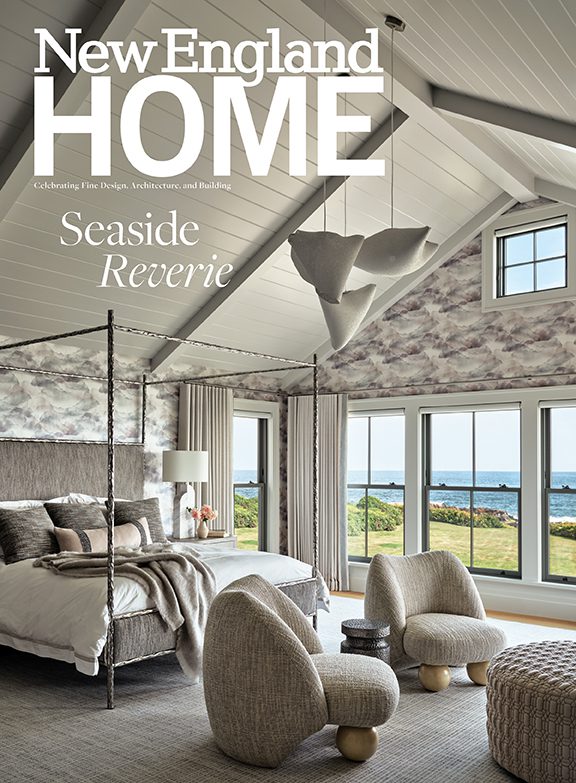
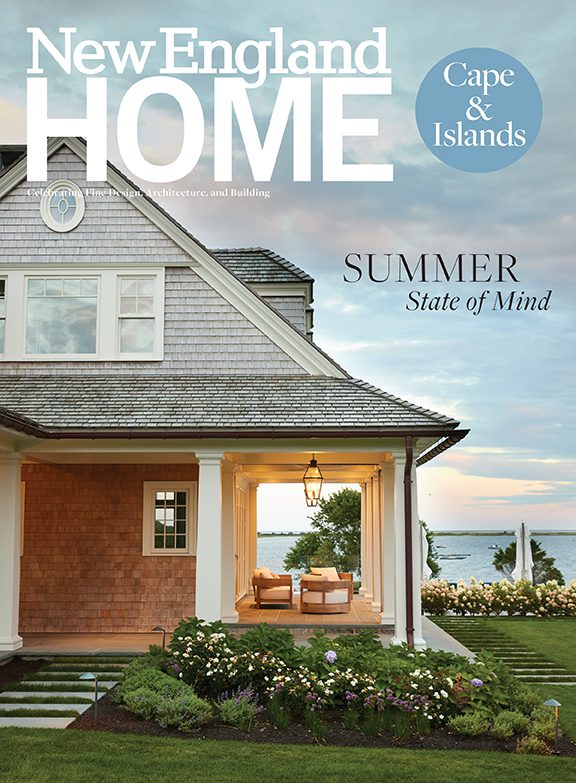
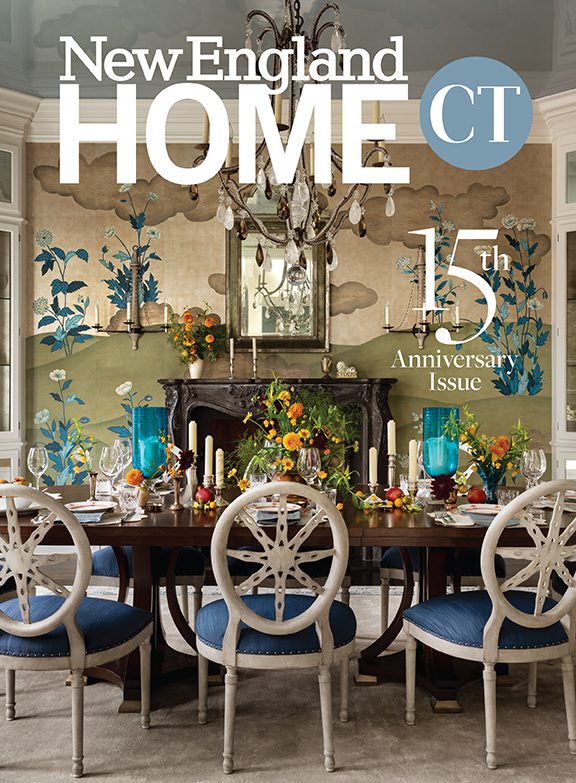
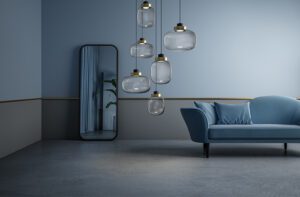
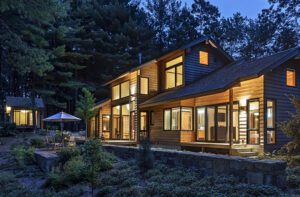
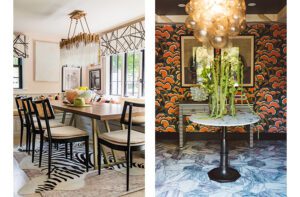
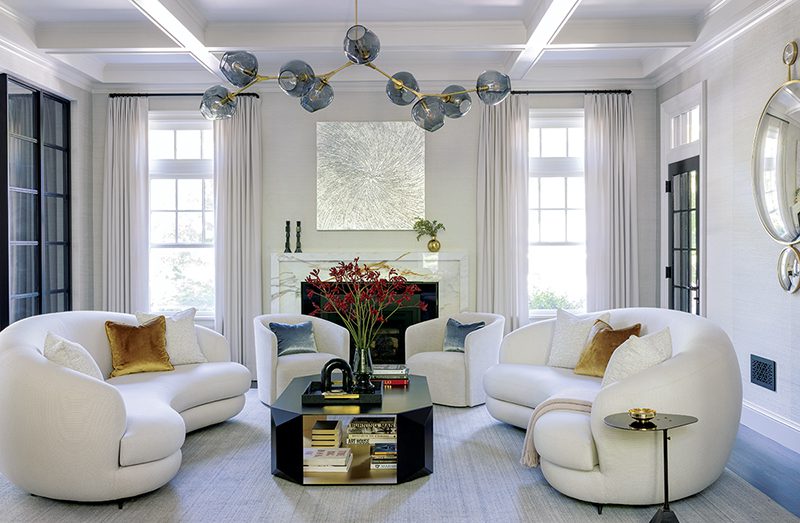
You must be logged in to post a comment.